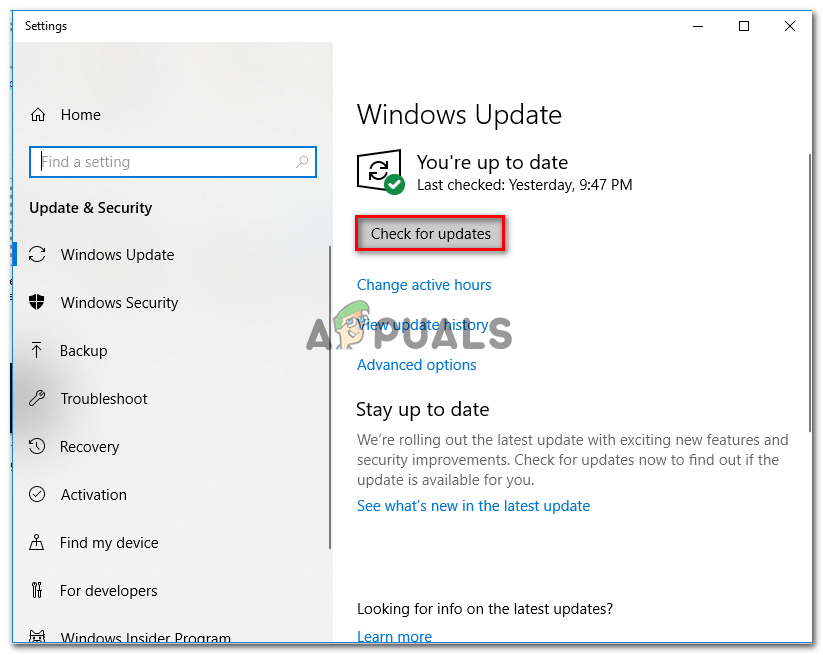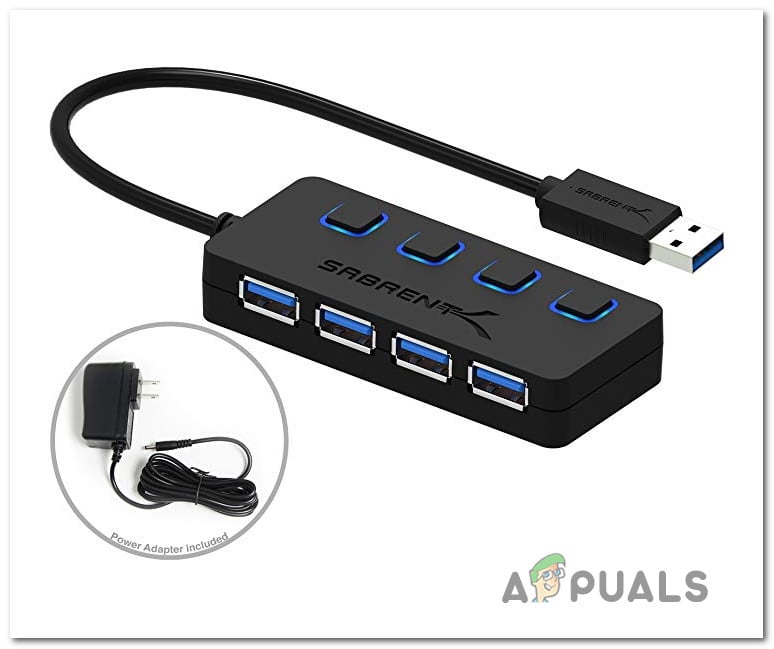While some affected users are reporting that the issue occurs once or twice per day, other users are complaining that they see this critical error every 10 minutes or so. The issue is not exclusive to a certain Windows version, but the frequency is much higher on Windows 7.
What is causing the BSOD Error Code 0x0000001e?
We investigated this particular issue by looking at various user reports and the repair strategies that are commonly being used to fix this Blue Screen of Death crash. As it turns out, there are several different culprits that might be responsible for this crash:
Method 1: Installing the hotfix for the 0x0000001E error
If you’re experiencing intermittent crashes with the 0x0000001E error on a Windows 7, Windows 8.1 or Windows 10 computer, chances are the issue is being caused by a system memory leak problem that Microsoft has already patched. If this scenario is applicable, this issue occurs when an application opens a file that has an oplock on it for modification. Whenever this occurs, NTFS will break the oplock, which in turn will leak nonpaged pool memory. This will end up causing excessive memory usage and other memory allocation features that will trigger the 0x0000001E error. Fortunately, if this is the case with your scenario, you can resolve it easily by installing the appropriate hotfix for this issue. Note: If you’re in Windows 7, you can install it manually from this link (here) The most efficient way of ensuring that the appropriate hotfix gets installed is to install every pending Windows update until you bring your operating system build to the latest. Here’s a quick guide on how to do this: If you’re still having the same issue, move down to the next method below.
Method 2: Disconnect non-essential peripherals (if applicable)
As it turns out, an overworked PSU (Power Source Unit) can also be responsible for the 0x0000001e BSOD. If you have a lot of peripherals connected to your computer, it’s a good idea to remove all non-essential one just to see if the issue is still occurring. Disconnect all non-essential and use your computer normally to see if the BSOD crash is still occurring. If the crashes stop altogether, you’ve successfully determined that you’re dealing with a power issue. In this case, you have two ways of mitigating the problem:
Upgrade to a more powerful PSU that is capable of supplying enough power to all your connected devices.Buy a USB Hub with its own Power Supply to take some load off your PSU.
If this method wasn’t applicable to your particular scenario, move down to the next method below.
Method 3: Running a Memory test
If you’ve come this far without a result, you should take the appropriate tests to ensure that you’re not dealing with a memory problem. As it turns out, faulty RAM can also be responsible for BSODs associated with the 0x0000001e stop code. Fortunately, Windows includes a tool that you can use to see if you’re dealing with faulty RAM memory. Follow the instructions below to test your RAM with the Windows Memory Diagnostic Tool: If this scan didn’t reveal any underlying problems with your RAM, move down to the next method below.
Method 4: Performing SFC & DISM scans
As it turns out, this issue can also be caused by some kind of system file corruption. If some file used during the booting sequence is being affected by corruption, you might experience constant BSOD crashes with the 0x0000001e stop code. Several affected users have reported that they managed to resolve the issue by running a couple of built-in utilities capable of fixing system file corruption without going for a radical solution like uninstalling the Windows. SFC (System File Checker) and DISM (Deployment Image Servicing and Management) are two utilities capable of repairing system files, but they do it in different ways. SFC will repair corrupted files by replacing them with locally stored copies, while DISM relies on WU (Windows Update) to download healthy copies in order to replace corrupted files. However, the two utilities complement each other, so we advise you to do both scans if possible, to ensure that you try to fix every possible corruption instance. Here’s a quick guide on running SFC and DISM scans from an elevated Command Prompt: If you’re still struggling with constant BSOD critical 0x0000001e Error Codes, move down to the final method below.
Method 5: Performing a repair/clean install
If none of the methods above have allowed you to resolve the issue so far, one of your last potential fixes is to refresh every Windows component. If this doesn’t fix the problem, it’s clear that you’re PC is suffering from an underlying hardware issue that wasn’t discovered using the methods above. The best way to do this is by performing a repair install. This procedure will refresh every Windows component while allowing you to keep all personal data including photos, videos, images, applications, games, etc. If you want to perform a repair install, follow the guide (here). You can also go for the more severe solution and go for a clean install (here) instead.
Fix: Stop Error Code 0x00000024 BSOD on WindowsHow to Fix BSOD with Error Code 0x135 on Windows 10How to Fix rtf64x64.sys BSOD Error Code “0x000000d1” in Windows?Fix: BSOD with 0x0000003b Stop Error Code







